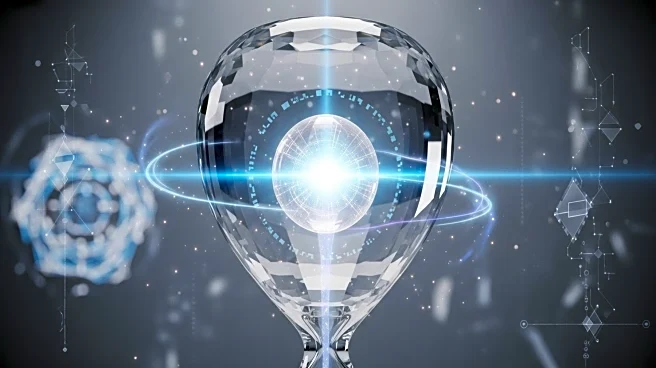What's Happening?
Researchers at the University of Colorado Boulder have successfully created the first time crystal visible to the naked eye. Time crystals, first theorized in 2012 by Nobel laureate Frank Wilczek, differ from traditional crystals in that their atomic structure repeats over time rather than in three-dimensional space. The team, led by Hanqing Zhao and Ivan Smalyukh, utilized liquid crystals similar to those in LCD panels, sandwiched between glass plates coated with a photoresponsive dye. When light polarizes the dye, it exerts pressure on the crystal, creating a series of interactions that repeat over time. This breakthrough was published in the journal Nature Materials, highlighting the potential for time crystals to play a role in advanced data storage and anti-counterfeiting techniques.
Why It's Important?
The development of a visible time crystal marks a significant advancement in the field of quantum physics and materials science. Time crystals could revolutionize data storage by allowing for the creation of more elaborate patterns through stacking, offering a novel method for storing information. Additionally, their unique properties could be harnessed for anti-counterfeiting measures, such as embedding a 'time watermark' in currency that reveals temporal patterns under light. This innovation opens up new possibilities for technological applications, potentially impacting industries ranging from finance to information technology.
What's Next?
The researchers at UC Boulder are exploring various directions for the application of time crystals. While the immediate practical uses are still being determined, the team is optimistic about the potential for further technological advancements. Future research may focus on refining the conditions under which time crystals can be produced and exploring their integration into existing technologies. The scientific community will likely continue to investigate the fundamental properties of time crystals to unlock their full potential.
Beyond the Headlines
The creation of a visible time crystal challenges traditional understandings of matter and time, offering a new perspective on how materials can be structured. This development could lead to a paradigm shift in how scientists approach the study of quantum materials, potentially influencing future research in physics and engineering. The ethical implications of using time crystals in anti-counterfeiting and data security also warrant consideration, as these applications could significantly impact privacy and economic stability.

